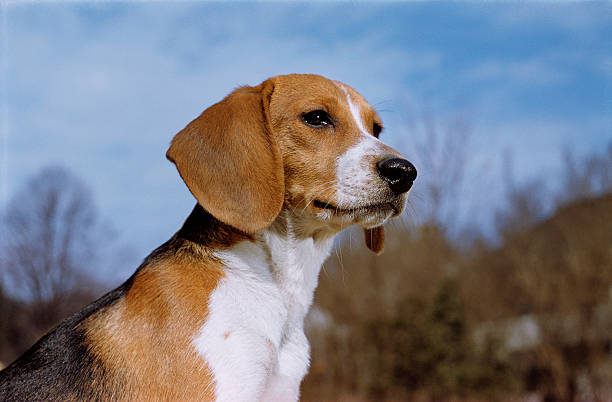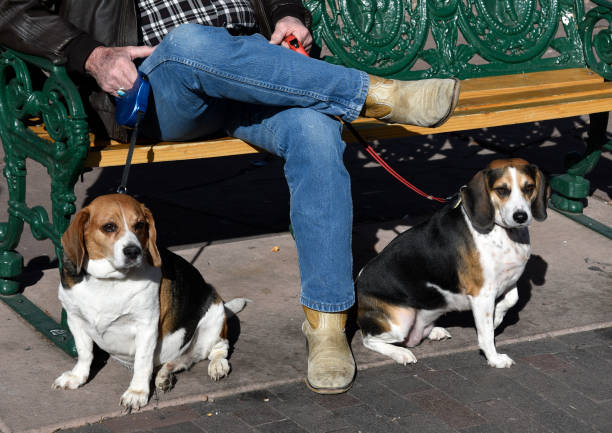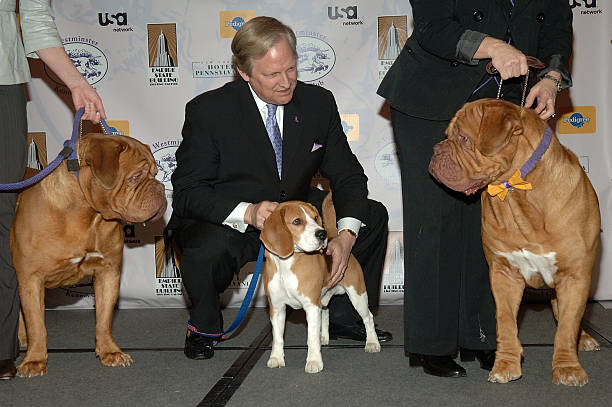
The Beagle is a small to medium-sized hound known for its excellent sense of smell, cheerful disposition, and distinctive baying voice. The breed’s origins can be traced back to ancient Greece, but the modern Beagle as we know it developed in England during the 19th century. Bred primarily for hunting hare and other small game, Beagles were prized for their exceptional scenting ability, stamina, and compact size, making them ideal for hunting on foot.
The Beagle gained popularity in the United States in the late 1800s and was officially recognized by the American Kennel Club (AKC) in 1885. Its friendly nature, intelligence, and manageable size quickly made it a favorite among families, hunters, and dog enthusiasts alike.
The Beagle is consistently ranked among the most popular dog breeds in the United States and around the world. Its charming personality, expressive eyes, and floppy ears make it an endearing companion for people of all ages. The breed’s versatility as both a hunting dog and a family pet has contributed to its widespread appeal.
The Beagle has also made numerous appearances in popular culture, from literature and film to television and advertising. Perhaps the most famous Beagle is "Snoopy" from the Peanuts comic strip, further cementing the breed’s place in the hearts of dog lovers everywhere.
The Beagle is a sturdy, compact dog with a distinct appearance characterized by its short coat, floppy ears, and expressive eyes.
Key Features:
• Coat: The Beagle has a short, dense, and weather-resistant coat that lies close to the body. The coat is easy to maintain and comes in various color combinations, including tri-color (black, white, and tan), lemon, red and white, and more.
• Size: Beagles come in two size varieties: those under 13 inches tall at the shoulder and those between 13 to 15 inches. They typically weigh between 20 to 30 pounds, depending on their size.
• Head & Expression: The breed has a broad skull with a slightly domed shape, a straight muzzle, and a black nose. Its large, brown or hazel eyes give it a gentle and pleading expression.
• Ears: The Beagle’s long, floppy ears are set low and rounded at the tips, contributing to its endearing appearance.
• Body: The Beagle has a strong, muscular body with a straight back, deep chest, and a moderately long tail carried high, often with a white tip to make it visible in tall grass.

The Beagle is known for its cheerful, curious, and friendly personality. This breed thrives on companionship and is an excellent family pet due to its sociable nature and playful demeanor.
Key Behavioral Traits:
1. Cheerful and Affectionate: The Beagle forms strong bonds with its family and enjoys being close to its owners. It is a loving and loyal companion.
2. Curious and Inquisitive: This breed is naturally curious and enjoys exploring its surroundings. Its strong sense of smell often leads it to follow scents, so secure environments are essential.
3. Playful and Energetic: The Beagle is an active dog that loves playtime, whether it’s chasing toys, playing with other dogs, or engaging in scent-based games.
4. Sociable and Friendly: The Beagle gets along well with children, other dogs, and even cats. Its friendly disposition makes it an excellent choice for multi-pet households.
5. Vocal and Expressive: The Beagle has a distinctive baying voice and is known for its vocalizations. It may bark, howl, or bay, especially when excited or following a scent.
If you're looking for a dog that combines a cheerful personality with a love of adventure and companionship, the Beagle is an excellent choice.
Reasons to Choose This Breed:
• Charming Appearance: The Beagle’s expressive eyes, floppy ears, and compact size make it an irresistible companion.
• Loving and Social: This breed thrives on human companionship and enjoys being part of family activities.
• Playful and Energetic: Ideal for active families who can provide regular exercise and mental stimulation.
• Intelligent and Curious: The Beagle’s curiosity and quick learning make it a fun and interactive companion.
• Good with Children and Pets: The breed’s friendly and tolerant nature makes it a great addition to multi-pet households.
The Beagle is relatively low-maintenance but benefits from regular care to maintain its health and well-being.
Essential Care Tips:
1. Grooming: The breed’s short coat requires minimal grooming. Weekly brushing helps remove loose hair and keeps the coat healthy. Regular ear cleaning is essential to prevent infections.
2. Exercise: Provide ample opportunities for physical activity, including daily walks, playtime, and scent-based games. The Beagle’s high energy levels require regular exercise to prevent boredom.
3. Mental Stimulation: The Beagle enjoys tasks that challenge its mind. Engage in scent games, puzzle toys, and obedience training to keep it mentally stimulated.
4. Social Interaction: The Beagle enjoys spending time with its family and should not be left alone for extended periods. Engage in interactive play and provide companionship to strengthen your bond.
5. Nutrition: Offer high-quality dog food to support the breed’s active lifestyle. A balanced diet helps maintain their weight and overall health.
6. Health Monitoring: Regular veterinary checkups are essential to monitor the Beagle’s health and detect any potential issues early.
The Beagle is generally a healthy breed, but like all dogs, it may be prone to certain conditions. Regular veterinary care and a healthy lifestyle can help mitigate these risks.
Common Health Issues:
• Hip Dysplasia: While not as common in Beagles, this condition can affect their mobility. Regular checkups and maintaining a healthy weight can help manage the condition.
• Ear Infections: The breed’s floppy ears can trap moisture and debris, leading to infections. Regular cleaning and monitoring are essential.
• Obesity: The Beagle’s love of food requires careful portion control and regular exercise to prevent weight gain.
• Hypothyroidism: A condition that can lead to weight gain and lethargy. Regular veterinary checkups can help detect and manage this condition.
• Epilepsy: Beagles can be prone to seizures. If your dog shows signs of epilepsy, consult with your veterinarian for appropriate treatment.

Compared to other scent hounds like the Basset Hound, the Beagle is smaller, more agile, and more energetic. While the Basset Hound is known for its laid-back personality and low-slung body, the Beagle is more active and enjoys regular play and exercise. The Beagle’s friendly and social nature makes it similar to the Labrador Retriever, but its smaller size and strong scenting abilities set it apart.
The Beagle is perfect for individuals or families looking for a cheerful, active, and social companion. If you enjoy outdoor activities and want a dog that thrives on companionship and play, this breed will fit right into your home. Regular exercise, mental stimulation, and veterinary checkups will help keep the Beagle healthy and happy.
If you prefer a more sedentary or low-maintenance dog, other breeds might be a better fit. However, if you're seeking a lively, loyal, and loving canine companion, the Beagle is an excellent choice.
United Pet Club is here to help you find the perfect canine companion. Whether you're looking to adopt or connect with trusted breeders, we provide valuable resources to guide you every step of the way.
Explore our platform to learn more about Beagle dogs, their history, and how to care for them. Contact United Pet Club today to start your journey with this cheerful and inquisitive scent hound!